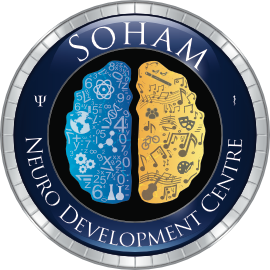
Why Use an EEG to Understand Mental Health?
By : Meghna Shekar
Date : 20-04-2020
How are you today? How are you feeling?
While these seem like extremely common, normal, unsuspecting questions, they have the ability to generate a myriad of responses in us – both psychological and physiological. However, we frequently tend to give socially appropriate responses and claim to be ‘fine’ even when we feel our stomachs churning, when we’re fidgety and even when we feel an impending sense of doom. Very often, even when we know we aren’t okay and seek professional help, we talk to our therapists in a similar manner. 
Traditionally, how were mental health problems understood and diagnosed? We met a therapist who asked us seemingly random questions about ourselves, we answered a lot of questions on a piece of paper, sometimes we played with blocks or even looked at images to find something hidden in them, and got a label or a title of a particular problem.
Dr House, in the show ‘House M.D’, lives by the philosophy that ‘Everyone Lies’ (Shore, 2004). As a doctor, he sees people lying about their problems, illness, symptoms, daily habits to a point where it interrupts with his diagnosis. People lie to their friends, families, colleagues, doctors, therapists and most importantly, themselves.
There may be multiple reasons for us to hide the truth – we may want to protect ourselves from what we think we may hear, or, we are unable to express what we are feeling. Our thoughts and expressions are extremely limited by our language and vocabulary; if the word doesn’t exist, neither does the feeling. Thus, we need something that transcends these limitations so as to arrive at an accurate and unbiased understanding of our state of being.
An electroencephalography (EEG) machine is one that can help overcome these limitations. Much like how the heart in its various states of functioning (rest/under activity) is studied using an electrocardiogram (ECG) machine, an EEG helps us understand the various brain patterns that are unique to different states of cognition such as being in rest, under high stress, while solving a complex math problem, in a state of depression.
 The EEG has been in use by medical practitioners to study strokes, seizures, tumours, traumatic brain injury, sleep patterns and disorders, and certify or rule out brain death. In more recent times it has come to study alzheimer’s, attention deficit hyperactivity disorder (ADHD), autism spectrum disorders, schizophrenia and various other neurological disorders, and may eventually also be able to help in an early detection and diagnosis of the same (Bosl, 2018). Research has also shown that certain frequencies can help determine whether a person may be suffering from clinical depression and chronic stress.
The EEG has been in use by medical practitioners to study strokes, seizures, tumours, traumatic brain injury, sleep patterns and disorders, and certify or rule out brain death. In more recent times it has come to study alzheimer’s, attention deficit hyperactivity disorder (ADHD), autism spectrum disorders, schizophrenia and various other neurological disorders, and may eventually also be able to help in an early detection and diagnosis of the same (Bosl, 2018). Research has also shown that certain frequencies can help determine whether a person may be suffering from clinical depression and chronic stress.
Along with its role in detection and diagnosis, EEG based biofeedback (neurofeedback) can be used to alleviate the symptoms of psychological problems such as ADHD, ADD, stress, anxiety and panic attacks, depression, memory and many more. Training one’s brain waves helps alter the dysfunctional state of mind and help attain a more optimal state of being – the brain essentially helps improve itself. It alters the existing neuro-circuitry and therefore creates a more long lasting effect, especially when combined with traditional therapeutic techniques.
Thus, an EEG becomes relevant to the understanding of mental health as it helps in assessing and treating various problems faced. So along with you, your brain can also help answer the question:
How are you today? How are you feeling?
